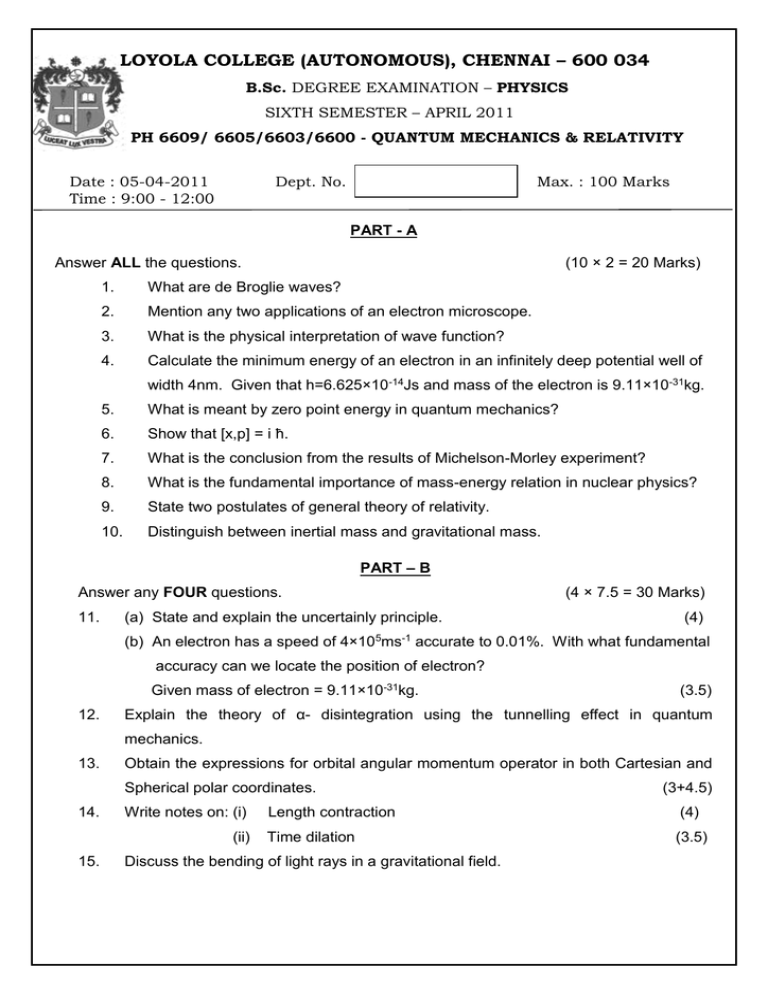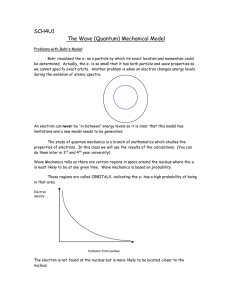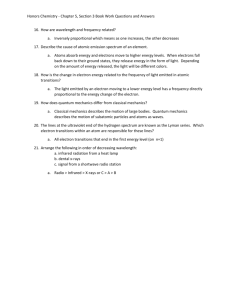LOYOLA COLLEGE (AUTONOMOUS), CHENNAI – 600 034
advertisement

LOYOLA COLLEGE (AUTONOMOUS), CHENNAI – 600 034 B.Sc. DEGREE EXAMINATION – PHYSICS SIXTH SEMESTER – APRIL 2011 PH 6609/ 6605/6603/6600 - QUANTUM MECHANICS & RELATIVITY Date : 05-04-2011 Time : 9:00 - 12:00 Dept. No. Max. : 100 Marks PART - A Answer ALL the questions. (10 × 2 = 20 Marks) 1. What are de Broglie waves? 2. Mention any two applications of an electron microscope. 3. What is the physical interpretation of wave function? 4. Calculate the minimum energy of an electron in an infinitely deep potential well of width 4nm. Given that h=6.625×10-14Js and mass of the electron is 9.11×10-31kg. 5. What is meant by zero point energy in quantum mechanics? 6. Show that [x,p] = i ħ. 7. What is the conclusion from the results of Michelson-Morley experiment? 8. What is the fundamental importance of mass-energy relation in nuclear physics? 9. State two postulates of general theory of relativity. 10. Distinguish between inertial mass and gravitational mass. PART – B Answer any FOUR questions. 11. (a) State and explain the uncertainly principle. (4 × 7.5 = 30 Marks) (4) (b) An electron has a speed of 4×105ms-1 accurate to 0.01%. With what fundamental accuracy can we locate the position of electron? Given mass of electron = 9.11×10-31kg. 12. (3.5) Explain the theory of α- disintegration using the tunnelling effect in quantum mechanics. 13. Obtain the expressions for orbital angular momentum operator in both Cartesian and Spherical polar coordinates. 14. Write notes on: (i) (ii) 15. (3+4.5) Length contraction (4) Time dilation (3.5) Discuss the bending of light rays in a gravitational field. PART – C Answer any FOUR questions. (4× 12.5 = 50 Marks) 16. (a) Describe G.P Thomson’s experiment on electron diffraction and explain the important conclusions. (10) (b) What voltage must be applied to an electron microscope to produce electrons of wavelength 0.40A? (2.5) 17. Derive Schrödinger’s time independent and time dependent wave equations using the concept of matter waves. (7.5+5) 18. Solve the radial part of the time independent Schrödinger wave equation for the hydrogen atom and hence obtain the energy levels of the hydrogen atom. (10+2.5) 19. (a) Derive the expression for the relativistic variation of mass with velocity. (10) (b) A proton of rest mass 1.67×10-27kg is moving with a velocity 0.9c. Find its mass. (2.5) 20. (a) Write a note on gravitational red shift. (b) Explain planetary motion using Einstein’s theory of gravitation. $$$$$$$ (6.5) (6)





